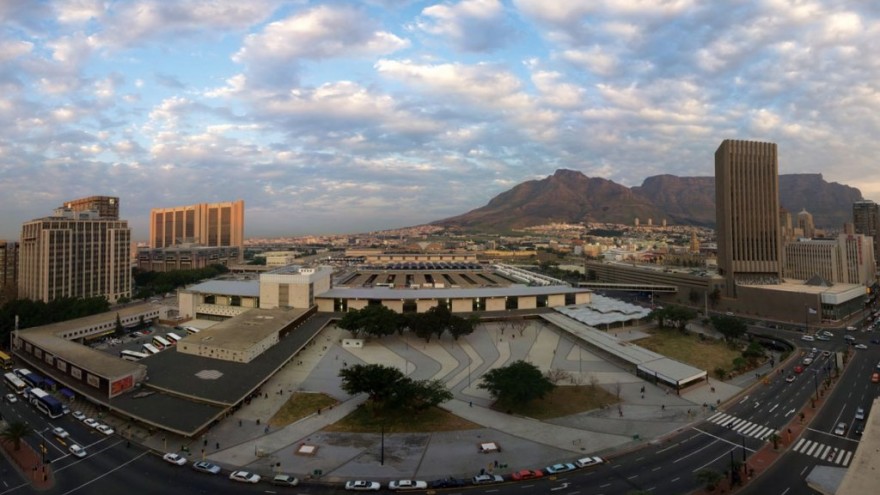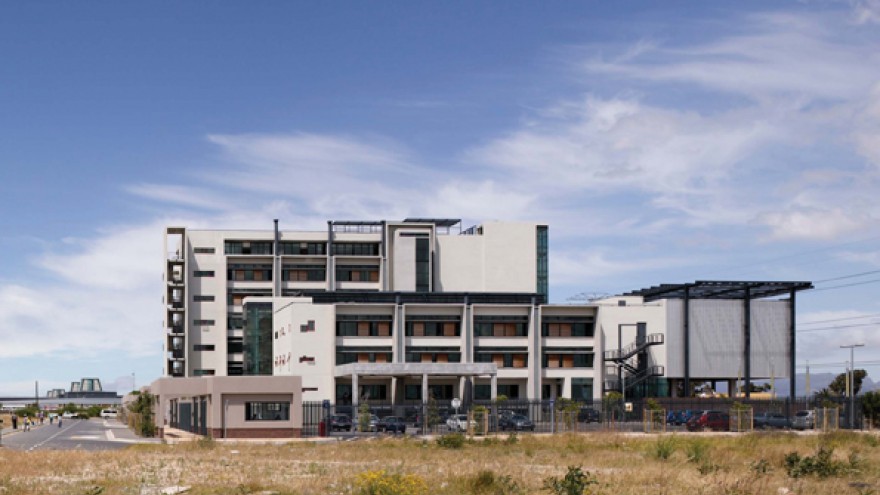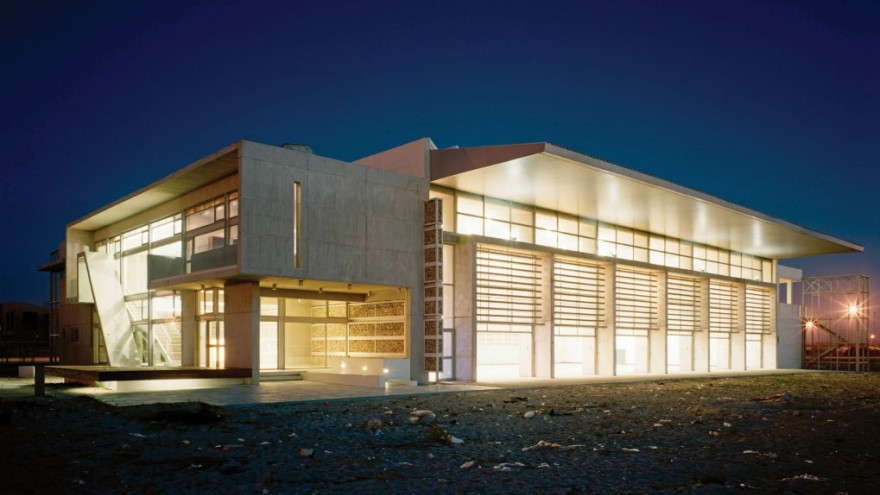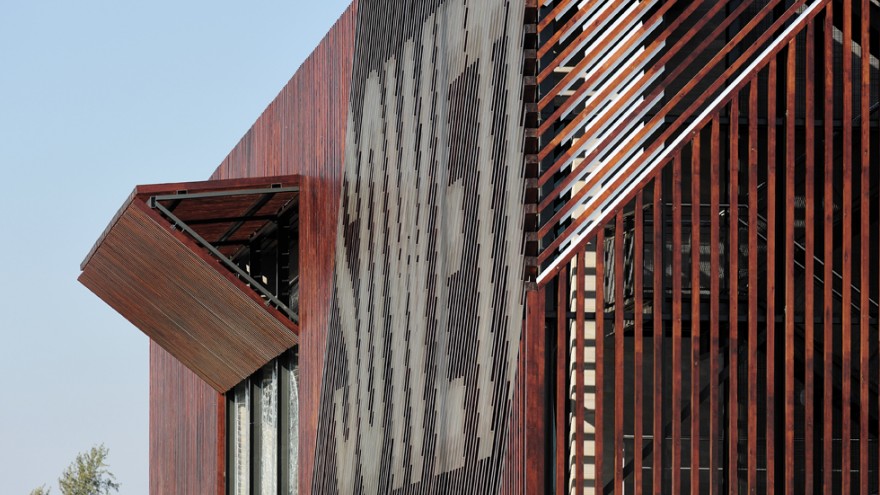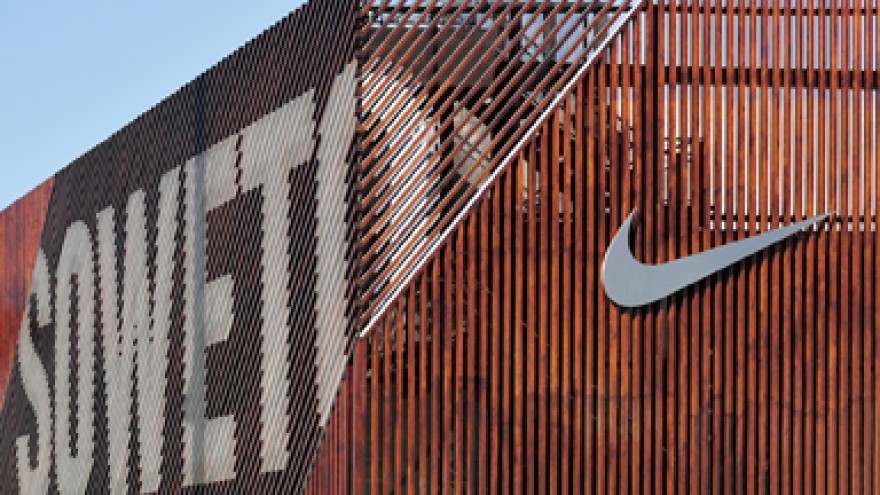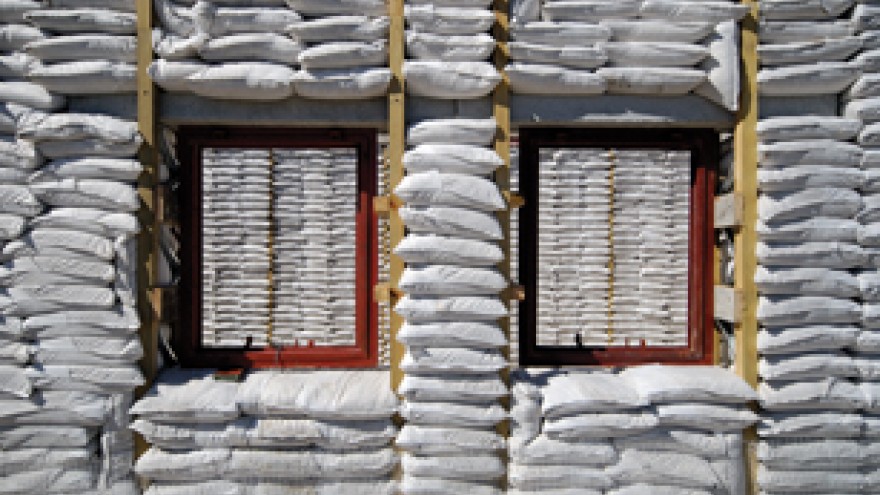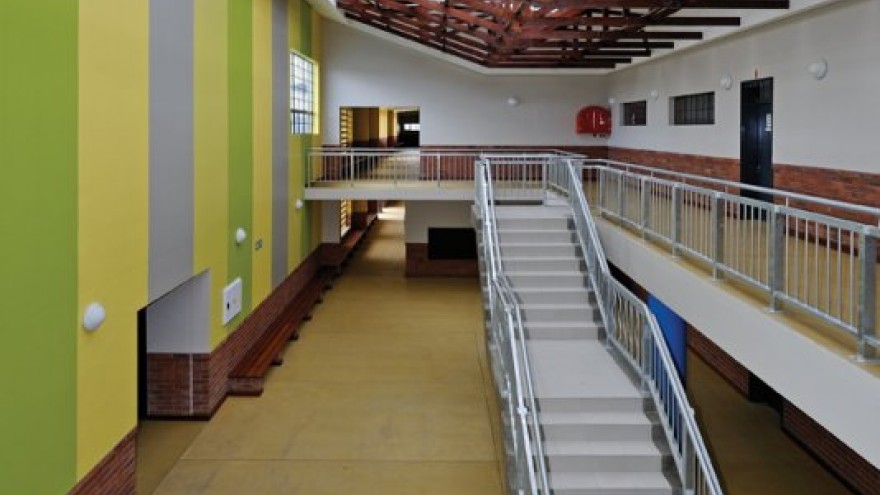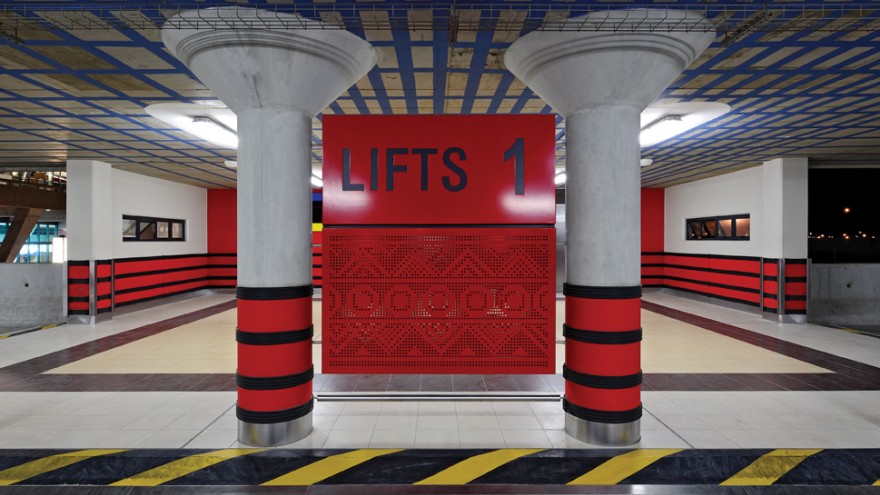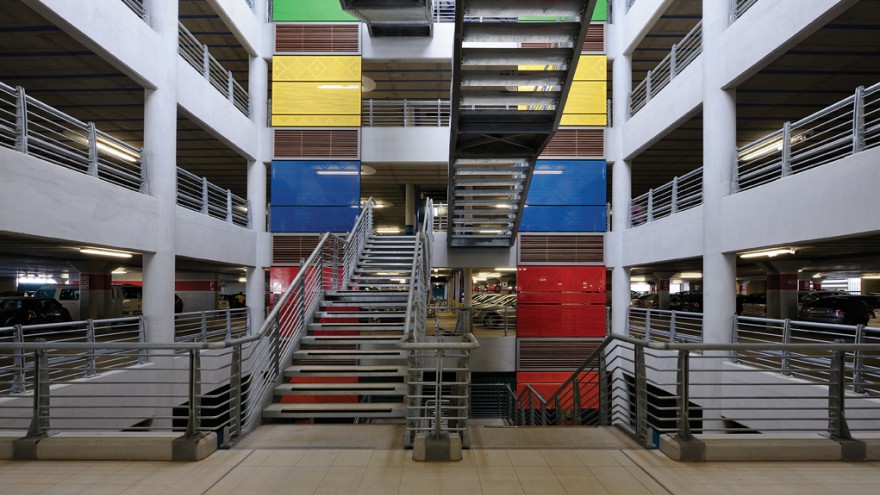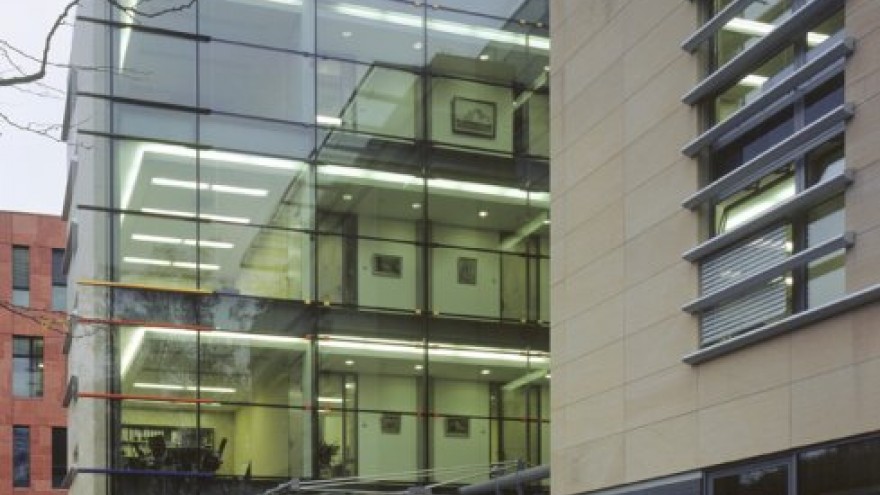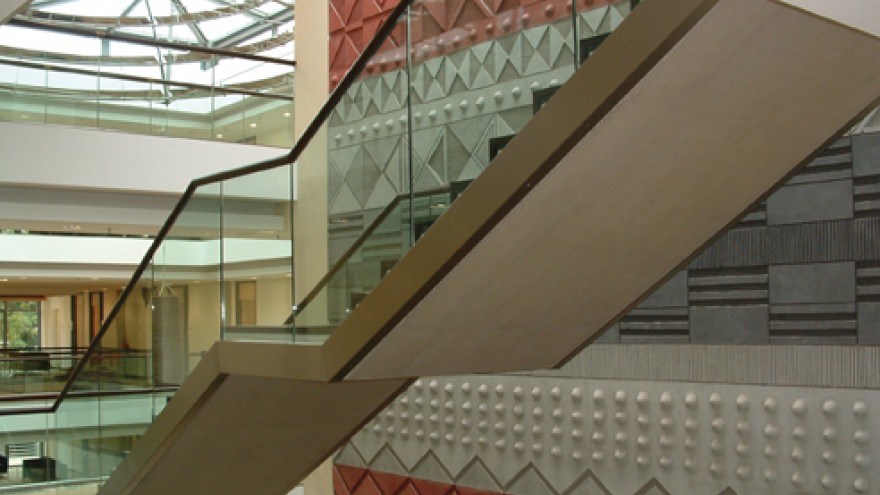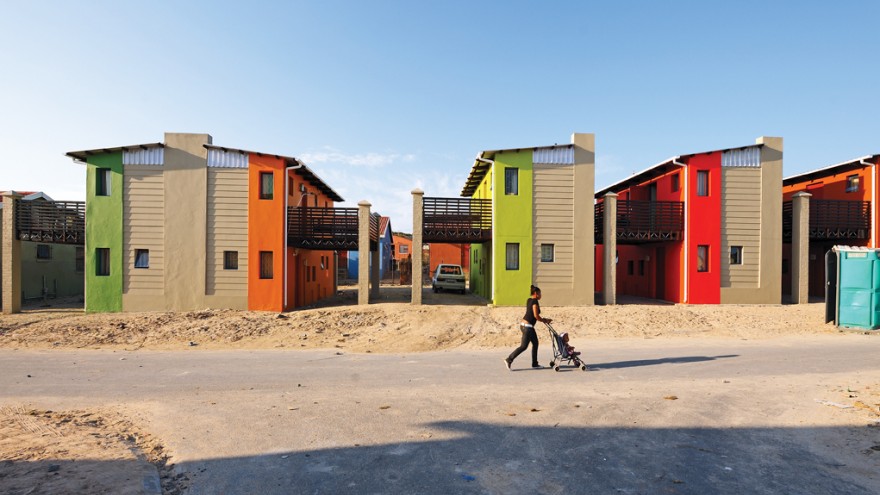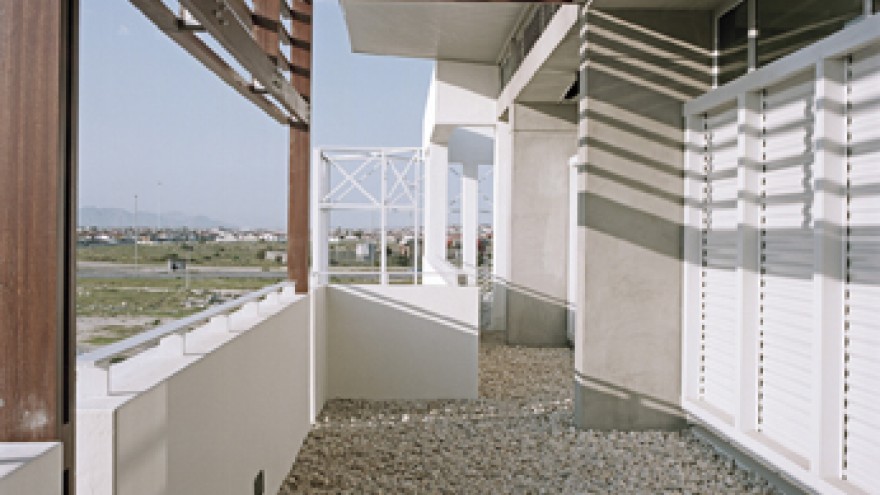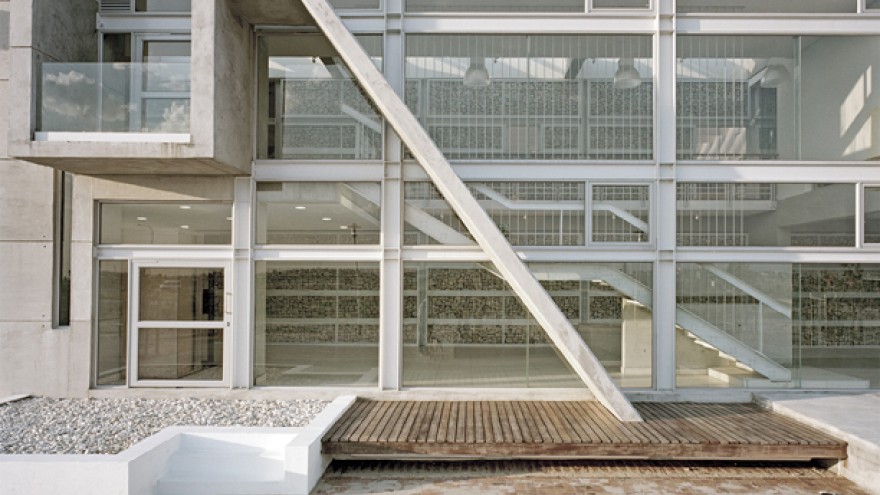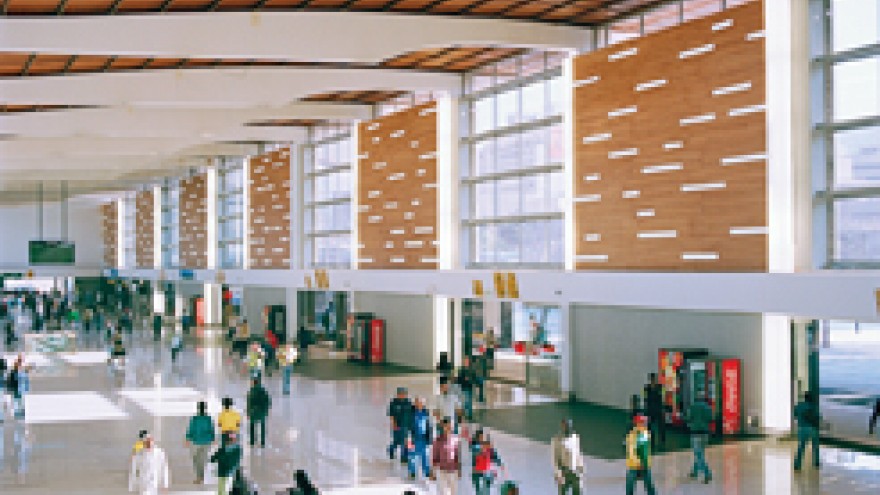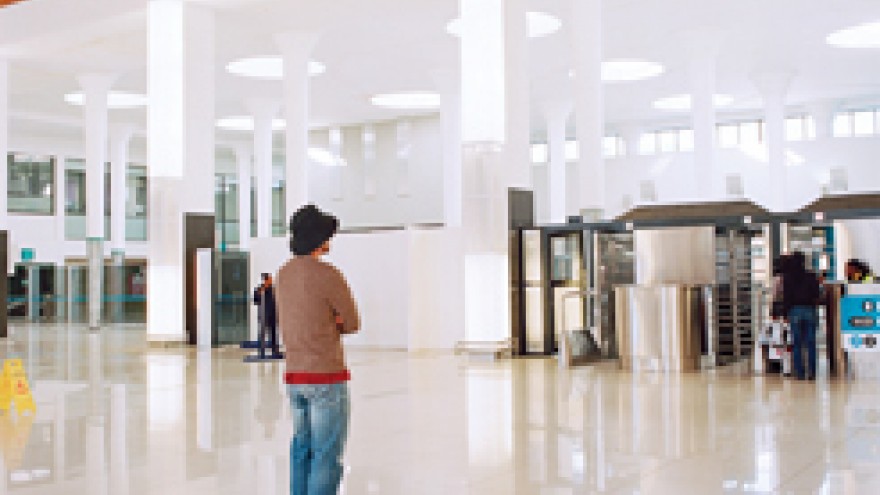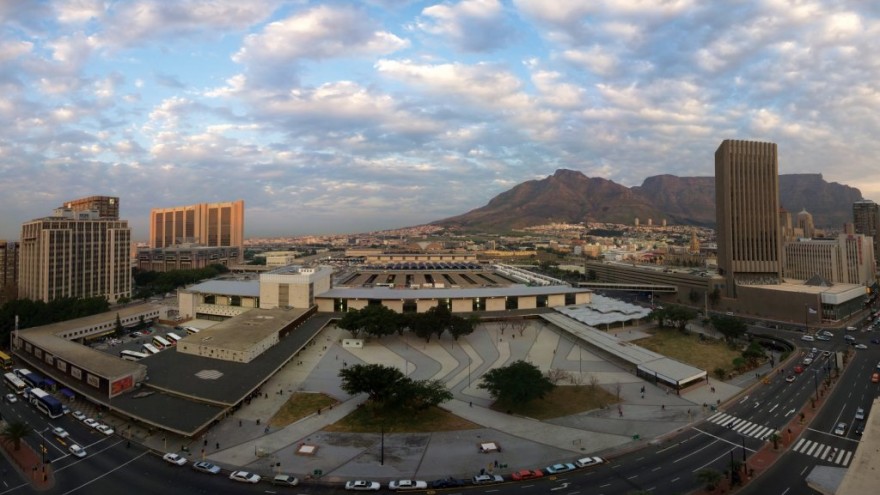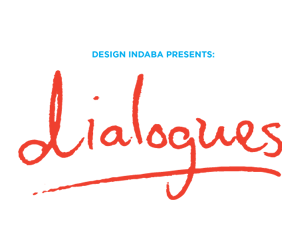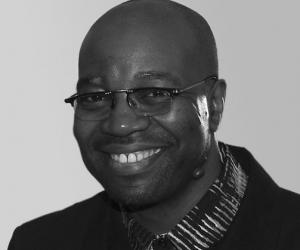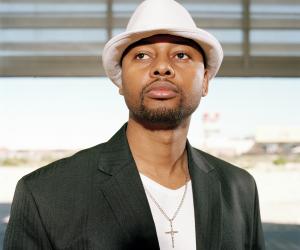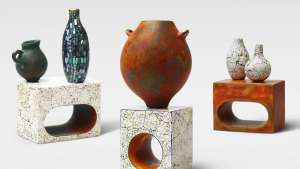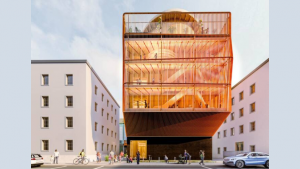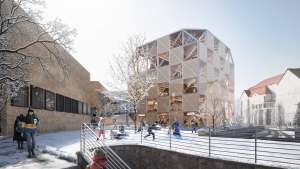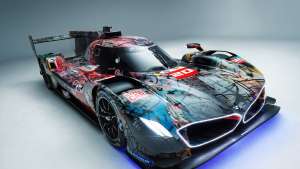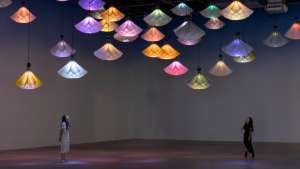Part of the Project
First Published in
Luyanda Mpahlwa: I came back from Germany in 2000, which is where I qualified and also where I worked for 15 years. Coming back to Cape Town, I wanted to get involved with what’s happening in the architecture scene at university level and get to know the young designers like you, Mokena. Then I heard that actually you are one of the top dogs.
Mokena Makeka: (laughing) I don’t know about that.
Luyanda: After that introduction, I became aware of your thesis and the Robben Island competition you were doing with another student, Mpho Matsipa. Now, Robben Island is very close to my heart because I spent five years of my life there, so I was following what was happening with interest. It was interesting for me to see that there was a new generation of architects who were getting involved in quite serious interventions.
Mokena: I’ve always had an intense respect for you, Luyanda. I must mention that when I was presenting my thesis, my thesis had two propositions. The one was obviously a museum as a building to help transform the city, but there was another side to it in that it was really meant to bring in a different dialogue about culture. You were an external examiner and actually one of a few people who understood the intentions of the project. Whether or not they were achieved is a different debate, but we clicked immediately because in your own way you have done a lot of work in pushing African architecture such as with the South African embassy in Berlin museum. We were grappling with the same question: How can architecture transform our place? I have always looked at your work as a beacon of where we need to go architecturally, because we’re both curious about how we can be different. Not for the sake of being different but to transform the country.
Luyanda: In terms of your interventions I think that it’s important to mention that, for both of us, it is about the practice and the institution of buildings in public spaces, and how South African culture can start finding expression in our architecture. This is exactly what I was trying to do with the embassy in Berlin. We tried to bring in cultural practices by manifesting it in art, like the carving of plaster that has been practised by women throughout the history of African society, especially in the Sotho areas. At the time it was also the first embassy by the new government and it had to reflect transparency, ensuring that the public passing through our embassy could look right through into our building because this is what South Africa is about.
To let that lead into another discussion, I think that it is very important that as architects, especially who both happen to be black and in Cape Town, we push the boundaries by saying that there is this different perspective to architecture, one that needs to start flowing into the design of buildings and the occupation of public spaces.
Mokena: I think we’re both driven by the belief that an African design is possible, that excellence can emerge from within our culture. That we do not need to imitate other places in order to be excellent. At the same time, to be excellent in Africa also means that we do not reject the good things that other cultures produce. Being African doesn’t necessarily mean beadwork and thongs. It’s about asking how we participate in the future.
I’m still fascinated by South Korea. The Koreans who emerged after the war were pretty much decimated, almost obliterated, but they consciously continued to participate in the global discourse of technology and improvement while remaining Korean. Now there is LG, Samsung, etc. While the government and society invested in its own people, what is significant is that they didn’t think that in modernising they had to forget who they are.
Luyanda: I would actually say that there is a resistance to accept and acknowledge that there is something that could be referred to as an African architecture. This resistance is a denial of the fact that as Africans we think in a particular way. When I was studying in Germany, my professors wanted to know how we build where I come from. They weren’t interested in whether I was capable of applying the high technology and industrialisation of Germany, which they knew they were teaching me and had no doubt that I would learn.
Mokena: I want to put a different spin on this by talking about the concept of love. You know, as scholars of architecture we read up about other countries, and how the architects loved the places they were in and the clients loved getting the architects to express who they were. We come from a position where we love Africa but that doesn’t mean we love it to a point where we over-romanticise it. We love it, we believe in it and we want to make architecture that we can look back at and say “this is a reflection of us dealing with our context in a positive way”.
For instance, there is a whole range of things for which we haven’t claimed public space. Do you know the amount of rituals that people have in their backyards because there is this unsaid rule that it is not meant to be expressed in public, whether it is circumcision or barbequing? Somehow the public space is a no-go zone and it comes from our history where public space, quite frankly, was controlled by a very particular elite. The moment you use public space in diverse ways, a different dialogue happens. In Green Point, I’m always fascinated how the Muslim community go there at a certain time of year to see the moon and for a moment it is a different cultural space. It is about Islam and it’s actually quite beautiful. All of our spaces, the gardens, the stadium, all of these things should be accessible for anyone who is South African to feel that they are part of the urban reality.
Once you make that decision to love your space and place, only then can you start asking intelligent questions about an African architecture. Then the debate is how to do it. I still don’t know how to make an African architecture and it will probably take many more years.
Luyanda: It's an ongoing debate. Because it is not about African architecture per se, but also about understanding how African culture is evolving.
Mokena: YES!
Luyanda: I just want to touch on a point you made about the Green Point stadium and the experience of the area. I take pride in the fact that I was among one of the few architects in Cape Town who supported the stadium being built in Green Point.
Mokena: I did too.
Luyanda: At a time when the whole city and soccer fraternity insisted that soccer is played in the townships, in Athlone and on the Cape Flats…
Mokena: Yeah, it was like “take soccer to the people”.
Luyanda: Exactly. But some decisions about city-making actually require some very bold but well-motivated urban development considerations and thinking. Especially because I had been to Europe to learn about the FIFA World Cup and to the Caribbean to learn about the Cricket World Cup, my perspective was that stadiums today have become social integrators and icons from an urban planning and urban space-making point of view. To come back to your point, you should see what is happening in the urban park that surrounds the stadium. Although it also got a lot of criticism from the people of Cape Town, it has now become a place where the Muslim community don’t only come to watch the moon during Eid but actually come to the urban park every weekend.
I’ve just come back from Barcelona. When I first went to Rome I fell in love, but now having been to Barcelona, I feel even more of that. The simple reason is that there is romance in the air. Not because the city provides places where you can smooch or that there are statues by Leonardo da Vinci, but because the city has streets that are walkable. You go to these European cities and you find pedestrianised streets that are open air and have a variety of spaces, small and big.
Then you find that Barcelona has 1.5 million people. Cape Town’s got 3 million but only 50 000 are living in the city bowl, so where are the rest? I think this is what we’ve lost in our city-making process. We have lost this romantic association with the city, with the public spaces, with the fact that a city is walkable. It is only now after the World Cup that you are starting to see that there is a new energy in the city, with the urban parks and with the BRT. But many other things still need to happen. We have not reached the stage where we can say “Wow, this is a world capital”.
In fact, we’re both part of the bid committee for the World Design Capital and one of the things that we asked right at the beginning was what the things are that we can put across and say are design driven? Although the Design Indaba has positioned Cape Town as a place where designers come to, we now need to look at design intervention and identify those projects that are going to transform Cape Town through design. Design needs to be the thing that unlocks Cape Town, contributing to social integration and transforming the thinking. Bring the Cape Flats into the city. Bring the city into the Cape Flats. For me, it is through the process of starting to create those spaces that you can talk about love again.
Mokena: What you’re saying resonates perfectly with some of the deficiencies that I have noticed. Think of New York where you buy that T-shirt with the big heart on it. It’s such an amazing place because it’s busy and it’s bustling but it still works at a neighbourhood scale. When people love their city the best ambassadors for the city are the citizens. When you travel and somebody asks where you are from, how many Capetonians say that Cape Town is the most amazing place and should definitely be visited? More people say they’re not so sure. A loving city takes care of its citizens and gives people choices, but it is also about being a fun city.
For too long, whether it is the result of apartheid planning or Calvinist approaches to government, there has been a very rational way of looking at cities. It was just about function, and I sometimes stop and wonder if that is part of the problem. If we really begin to tap into African culture and villages, villages are extremely fun places. There is so much interaction, there are things happening, it’s vibrant and people take care of each other.
I mean, I just finished the Cape Town Station project and it was a deliberate attempt of mine to make the square part of the public realm. But I was there yesterday taking photos and the security told me I couldn’t take photos. It is designed as a public place, it looks like a public place but its use is still privatised. Until we get to the point where our city is really fun for us, it won’t be fun for others. Like you had fun in Barcelona, surely part of the fun is to be there and see other people have fun. Vibrant cities and economically productive cities are the ones that understand culture.
Luyanda: Density plays a big role and one of the things that makes the African village idea work is that spaces are intimate. When I look at some of the attempts at dignified space in the townships of Cape Town, you see the creation of urban squares, which is the wrong urban design approach. The reason why squatter areas work is because they are dense, intimate and intense. They don’t want to open up into large spaces because people who come from a rural background, as most of the people in squatter areas do, like the intimacy of knowing your neighbour. People will create their own squares that are intimate. They won’t go to a big public square.
Mokena: Which is an Italian idea.
Luyanda: Exactly. You go into the townships and what you see there is everything but vibrant squares.
Mokena: And that is African design. That is an African decision.
Luyanda: You cannot take things that work in a certain culture and in a certain environment and think you are going to execute them in an environment that you don’t understand. One of the reasons why the urban park is successful is because it has lots of different spaces that you can choose from – spiritual gardens, herb gardens, a little amphitheatre, a water feature and so on. You find that, unlike in Kirstenbosch Gardens, kids play ball in the urban park. My kids were there with their bikes, others were J-boarding. This is a real park. It’s about creating lots of different environments rather than the gigantic, single kind of monocultural idea.
What we did in Freedom Park was to introduce a spiritual angle to our space making. Spiritual leaders were brought in to interpret some of the spaces and determine how to occupy those spaces. This comes back to our discussion about what it is that is African and understanding how African culture is evolving. Cape Town used to have a lot of Xhosa-speaking people, but there is also a growing Sotho community here and a large community of expats from other African countries who are occupying the inner city in particular. This is why the notion of an African architecture is something that can never be started and finished. It will continue evolving and it will be about how we continue to see it. And I’d like to end there.
Mokena: I also need to go in about five minutes. For me I am excited by the potential of this discourse; I believe that this journey is a fruitful one because there is an African sensibility that makes an African architecture possible. It is not purely for architecture’s sake but it is to give people dignity where currently there isn’t a sense of dignity. People believe that knowledge only comes from the “West” and that the “South” consumes knowledge. What we are doing now is building up the discourse. I would love to see where we are ten years from now in our respective practices because the work that we do will surely be studied internationally!

